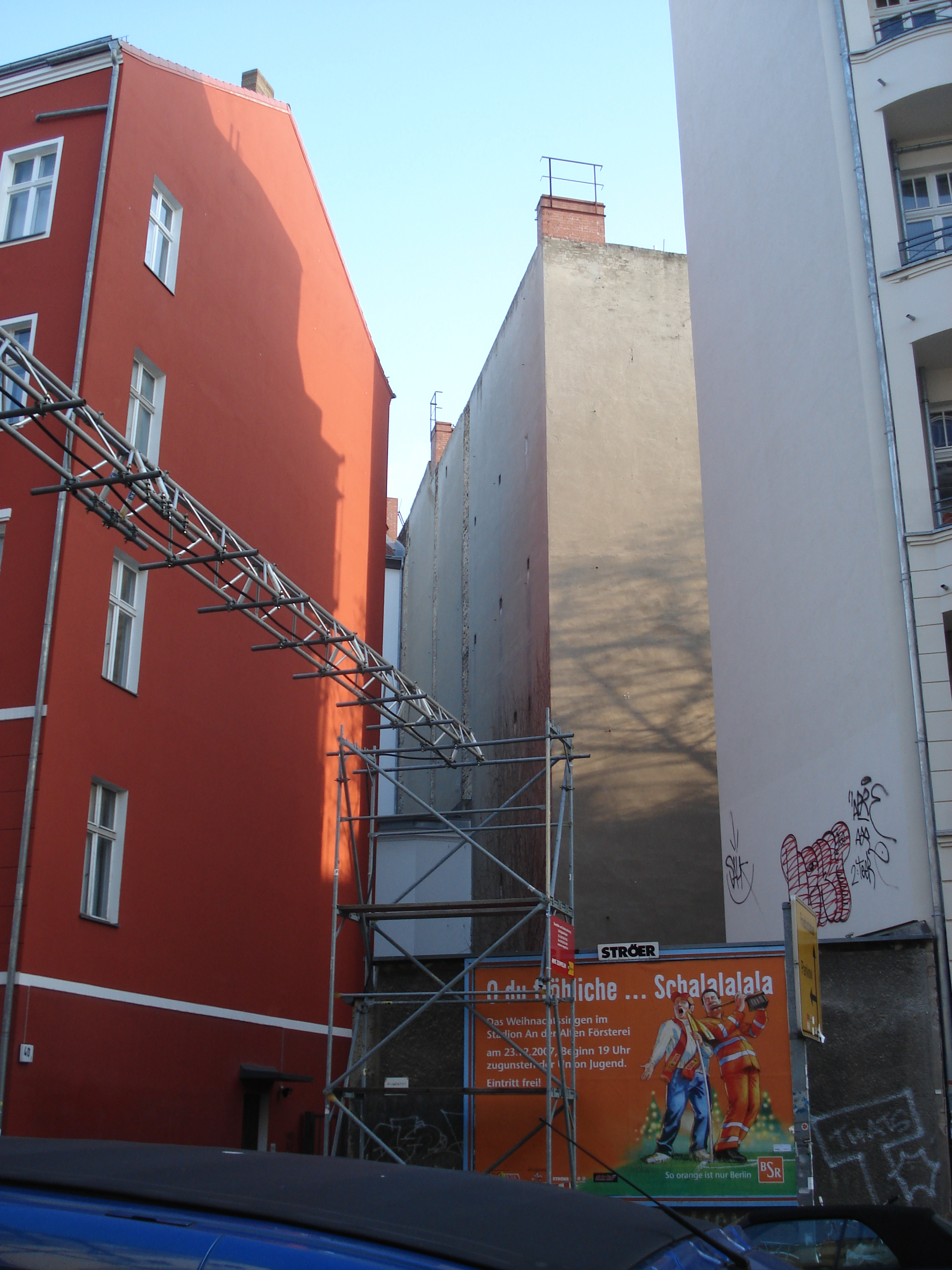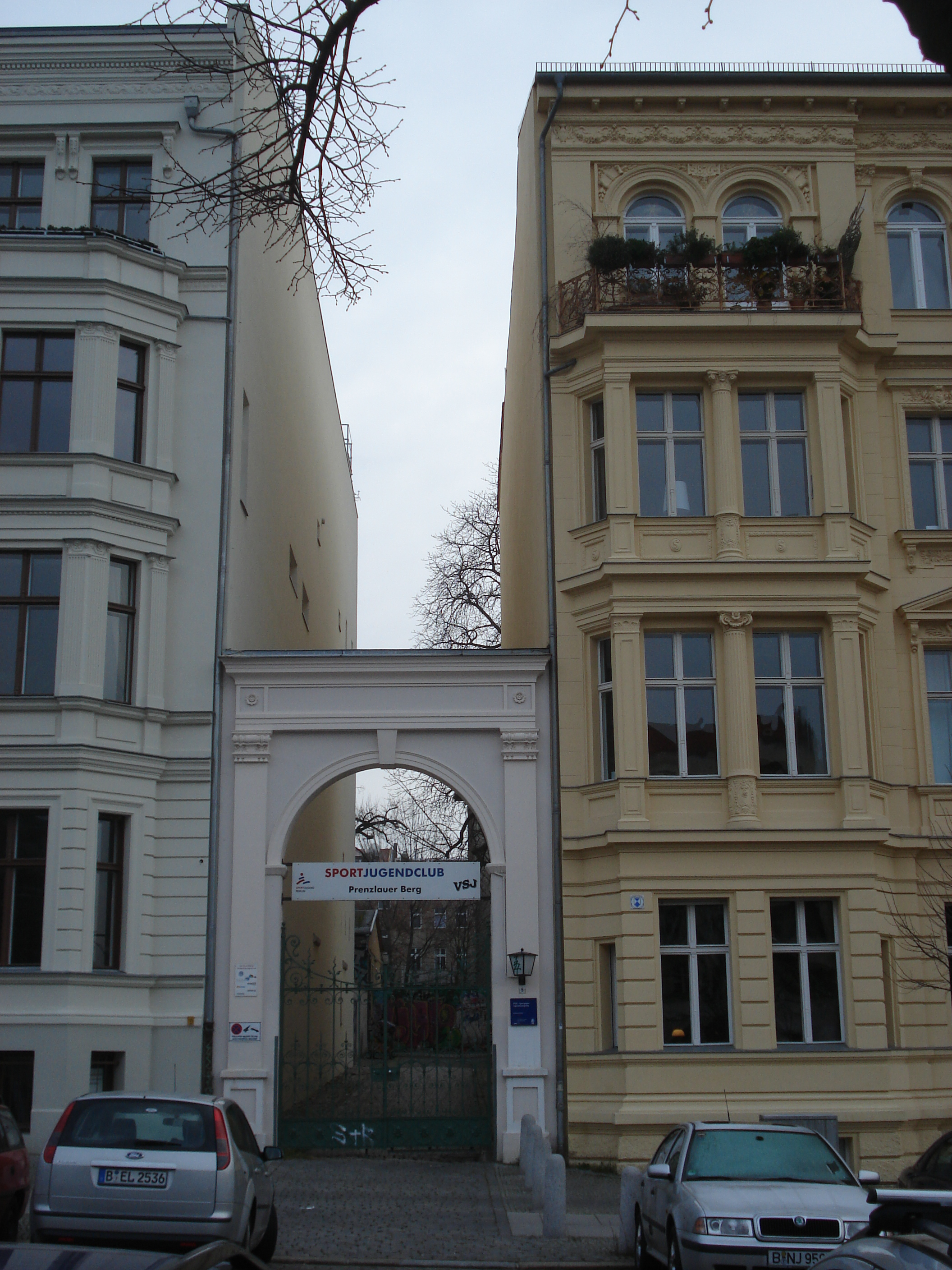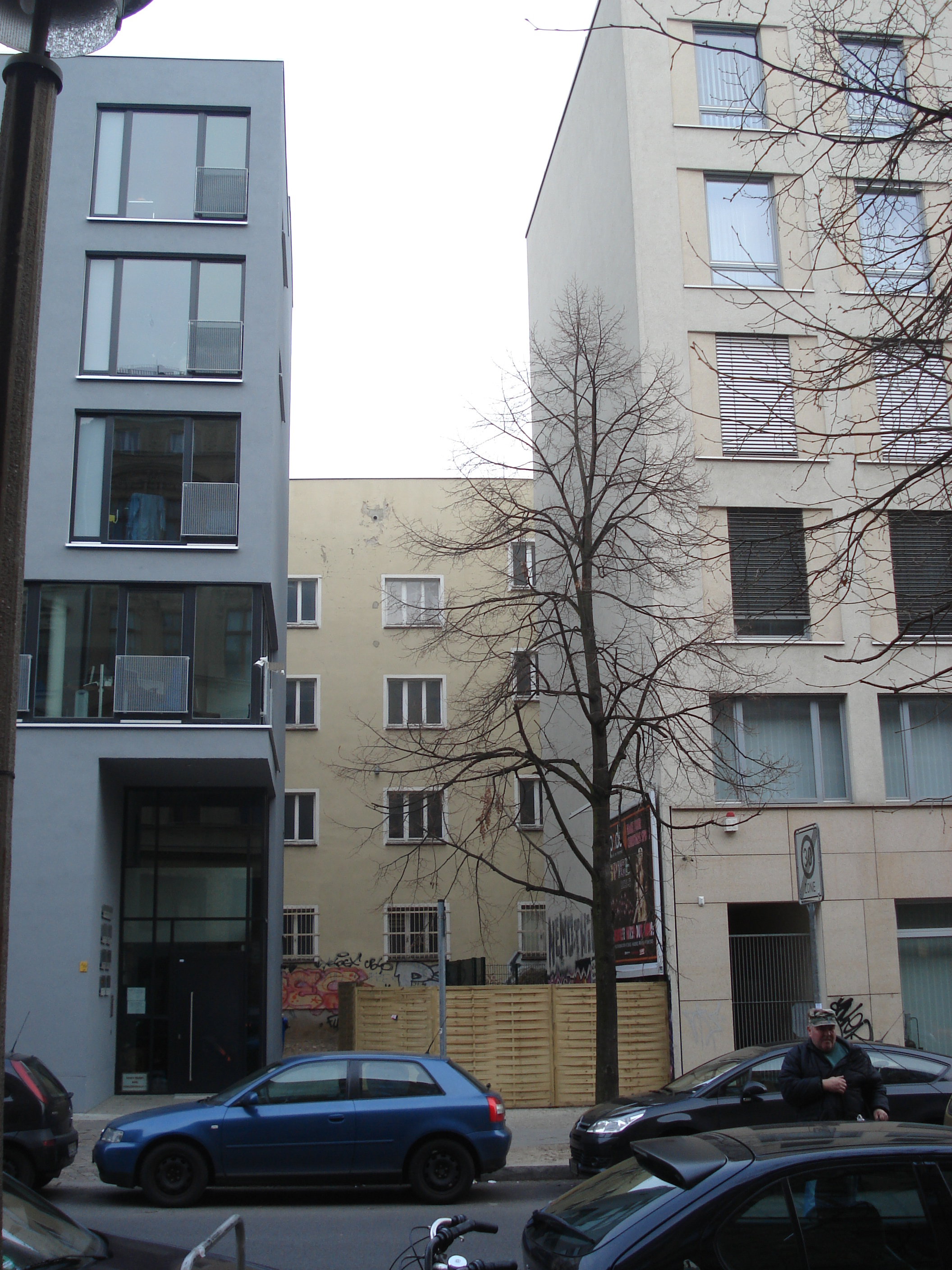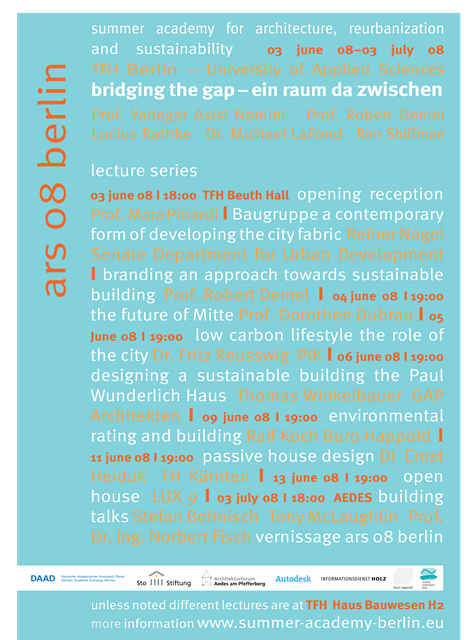Bridging the Gap - Einraum Da Zwischen
Bridging the gap, does focus on enhancing the density of the urban fabric. This in the first place reduces the need of transportation and therefore energy consumption. As Paul Goldberger put it: “The city is in many ways the greatest energy saving device men’s ever created. There’s no better model for energy conservation than putting people close together”.
To put it the other way around: How large would the reduction of energy consumption have to be if transportation and living will be summarized in on account? Using the space in the city starts out with a win win situation.
Ultimately we talk about using the light of the sun's energy at its utmost possibility. In terms of architecture sunlight is not only energy but it is the source that makes form legible. The architectural form reveals its quality throughout the course of the day depending on the direction and intensity of the sun light.
This, the more obvious architectural issue will be paired with concepts to minimize the loss of energy throughout the winter and strategies to prevent overheating in the summer. We consider the summer academy a laboratory to investigate in shaping forms that do contribute to the goals of sustainability.
The scenario we like to focus on is linked to a low carbon lifestyle. Designing a sustainable building to a large extend is an opportunity to have a building communicate the difference.
Less is more
Mies van der Rohe’s less is more, is representing an architectural position, striving to create the architectural quality by composing the structural elements of the construction, such as slabs, walls and columns to manifest space. The idea to reduce the architectural effort to what is necessary draws of the structure rather than of the functions the spaces are supposed to be used for.
What does that have to do with green building?
In 1983 the discourse about the sustainability was summarized by the prime minister of Norway, Gro Harlem Brundtland’s famous quote outlining sustainable development as a development that meets the needs of the present without compromising the ability of future generations to meet their own needs.
With energy conversation and the reduction of greenhouse emissions obviously the most important issues are called on. The actual debate so brings the attention to the operation of the building. Looking at the larger picture of a buildings lifecycle among others we have to consider that, the energy which was needed to build the buildings of our environment equal approximately the energy those buildings will need to be operated over a period of 20 years.
If not the function, as it was claimed ever since Louis Sullivans work, what is at stake at a contemporary architectural composition? Developing buildings which do not only work for one functional setting becomes a major aspect of the architects work. Back in the 70ies and 80ies designing systems that will adapt to the change of use haven’t fulfilled the expectations. Around the same time people started looking at reusing empty warehouses to convert those fore new forms of living; the so called Fabriketage emerged.
Amazingly enough this building type, offering a large space, a functioning circulation system and a lot of daylight appeared to offer all that was needed. The construction system, typically some kind of skeleton system functioned as a prerequisite, in short a building that establishes it’s form from a dialogue with the urban context, circulation, the construction system and the appearance of the skin.
Looking at urban building typology, locally structures have been developed that have shaped the environment over decades. Arguing for the architecture of the city, Aldo Rossi strengthened his position by describing that on an average a buildings function does change throughout its life time at least three times. Design the city became the logical conclusion. The focus was directed towards the form, the public space, and the urban artefacts.
Comparatively looking at a modern high-rise structure in Manhattan is inspiring. Due to the structural system the building is able to adapt in many ways. What is designed is the form, addressing the contextual issues of the place, reshaping the context, circulation and skin, allowing for a countless architectural interpretations of the interior.
Stressing the energy performance, the orientation, zoning the floor plan, using buffers, maximizing passive solar energy, reducing the heat loss and last not least preventing the building from overheating do turn into additional requirements.
The design of cars, ever since the 70ies, took a promising turn. The so called drag coefficient was not considered an issue shaping the form of a car in order to improve fuel efficiency. It is this relationship between form and a technical requirement that we want to explore. Luigi Colani created cars which appeared futuresque, today a lot of his ideas are part of every days world. Nobody would expect to see a car that doesn’t compare to aerodynamic principals. When he made this a design issue he was leading the way.





